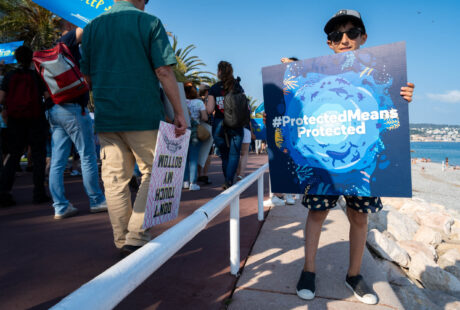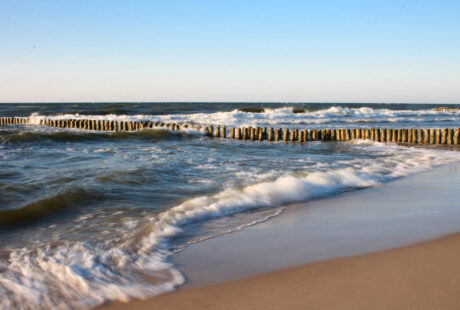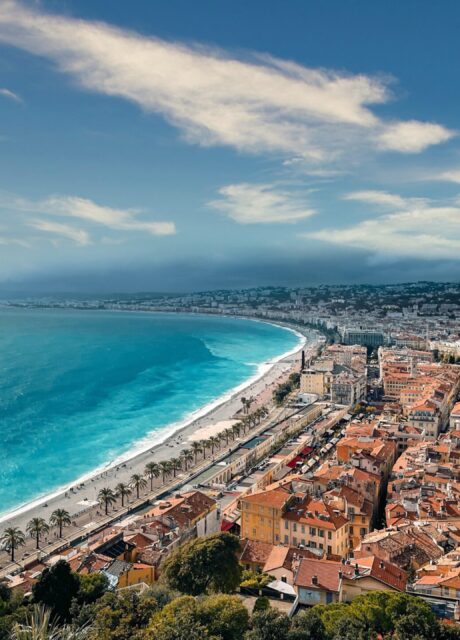EU Fisheries Ministers have once again failed to end overfishing, disregarding both scientific advice and legal obligations in the face of escalating climate and biodiversity crises. At this week’s Council meeting, despite recent findings showing that current stock assessment models overestimate productivity and recovery trajectory (1), Fisheries Ministers did not change their approach when setting fishing quotas). For EU-only stocks, Ministers exceeded the best available advice for several species, including for Pollack and Kattegat Cod (2)(3). Marine NGOs Seas At Risk, Sciaena and BUND stress how the decisions taken blatantly disregard the Common Fisheries Policy legal obligation to end overfishing by 2020 (4).
Despite the natural interconnections among fish populations, fishing quotas continued to be set based on individual species assessment. This fragmented decision making overlooks the requirements of the Common Fisheries Policy, which foresees a broader ecosystem-based management (5). To fully apply both the precautionary principle, as well as an ecosystem-based approach to fisheries management, Ministers should set quotas below the best available single-stock scientific advice (6).
In the shared EU/UK stocks, the limit set for the Celtic Sea cod bycatch quota (7) stands out as the most striking example, as it unequivocally highlights the disregard for science and sustainability by Fisheries Ministers. Against scientific advice (8), which recommended a zero-fishing quota for Irish cod due to the species’ critical status, the Council still approved a generous bycatch quota of 644 tonnes. Alarmingly, this quota surpasses the estimated population of celtic sea cod, which scientists project at an average of 585 tonnes. In other words, the bycatch quota approved by Ministers is very likely to exceed the entire population of Celtic Sea cod.
“This decision goes beyond absurd,” said Rémi Cossetti, Marine Policy Officer at Seas At Risk. “By ignoring science and setting quotas for potentially non-existent fish, Ministers have turned policy-making into farce. Yet, this is no laughing matter, our marine ecosystems and the livelihoods of coastal communities are at stake, making this recklessness quite disturbing.“
By setting high bycatch quotas for Celtic cod, Ministers ensure that mixed fisheries, where non-selective trawlers dominate, can continue operating without significant disruption. On the contrary, this decision harms small-scale, low-impact fishers who use sustainable fishing methods but who see the ecosystem and biodiversity being rapidly depleted by the destructive trawling industry.
At this year’s meeting Ministers also agreed on TACs for deep-sea species. Gonçalo Carvalho, Executive Coordinator at Sciaena had the following comment: “We are glad to see that the scientific advice was followed for some key stocks, including red sea bream in the Portuguese coast. However, Ministers must transparently share the data and analysis underpinning the claims of socio-economic impacts that justified overriding the scientific advice for other stocks. It must be understood that overfishing may result in bigger quotas for the next year but to the detriment of the long-term survival of these stocks, particularly deep-sea fish populations (9). Furthermore, fishers and ministers are well aware that larger quotas don’t necessarily result in better income and social support. There are social, economic and management measures that must be in place to ensure this and we eagerly await the presentation of such measures in the weeks and months ahead.”
Another dire example is the one of eels. Despite being officially classified as “critically endangered” (10), the EU continues to allow commercial fisheries for the eel in both marine and freshwater environments. The closed period for marine fisheries, established by Ministers, will remain for 6 months in 2025/6 and recreational fishing will remain banned.
Valeska Diemel, Fisheries Policy Officer at BUND said: “Allowing fishing for a critically endangered species is not sustainable in any way. The six month closure is far from being enough to help the population recover. The exemptions for juvenile glass eel fisheries (11) will completely counteract the possible effects of the closure. The scientific advice is clear: No fishing for eels in all life stages.”
“It’s time to adopt a more forward-thinking approach to fisheries management.” said Remi Cossetti, adding: “Fishing quotas should reflect the natural interdependence of species. Ministers should also champion the transition to low impact fisheries not only by incorporating environmental criteria into quotas’ distribution (12) but also by promoting more sustainable business models (13). This dual approach would not only benefit the ocean’s health but also secure the livelihood of communities dependent on healthy ecosystems”.
END
NOTES TO EDITOR
- Investigation reveals global fisheries are in far worse shape than we thought – and many have already collapsed. Edgar, G (2024) 23 August 2024.
- Fisheries Ministers’s decision on the Atlantic and North Sea stocks and EU/UK shared stocks.
- For Pollack, the ICES advice is 872 tonnes, against an agreement at 1199 tonnes. For Kattegat cod, the advice is of no-catch, but Ministers still agreed on a 72 tonnes bycatch TAC.
- The Common Fisheries Policy (CFP) (art 2(2)) states that “the maximum sustainable yield exploitation rate shall be achieved […] at the latest by 2020 for all stocks”.
- According to the Common Fisheries Policy (art 2.3): “The CFP shall implement the ecosystem-based approach to fisheries management so as to ensure that negative impacts of fishing activities on the marine ecosystem are minimised, and shall endeavour to ensure that aquaculture and fisheries activities avoid the degradation of the marine environment”.
- Joint NGO recommendations to the EU on setting fishing opportunities for 2025.
- Bycatch quotas refer to the maximum amount of unintended catch of non-target fish species that fishers are permitted to land while fishing for other target species. These are intended to allow fishers operating even when vulnerable species are accidentally caught in their nets. However, bycatch quotas often exceed what is sustainable for vulnerable fish populations, undermining the recovery efforts.
- Scientists from the International Council for the Exploration of the Sea (ICES) have assessed the biomass of Celtic Sea cod, estimating it to be within a range of 237 to 1,144 tonnes. Based on this data, the most likely scenario places the population at an average of approximately 585 tonnes.
- Deep-sea fish populations are vulnerable due to their slow growth, late maturity, and low reproductive rates, which limit recovery after overfishing. Their fragile habitats, such as seamounts, are easily damaged by destructive fishing practices like bottom trawling. Combined with limited data for monitoring and climate change impacts, these factors make them highly susceptible to long-term depletion.
- According to the International Union for Conservation of Nature, the European eel is classified as “critically endangered”. This means that the European eel is one step right before extinction. Ref: https://www.iucnredlist.org/species/60344/152845178
- The European eel has a very complex life cycle, going through several different life stages. The very small, translucent eels arriving at European coastlines are called glass eels. Glass eels are caught mainly in France, but used for restocking in rivers and aquaculture all over the EU. No net benefit of restocking to the eel population recovery has been proven. In its advice for 2025, ICES notes that “restocking is reliant on a glass eel catch, which is in contradiction with the current advice”.
- The Common Fisheries Policy (art 17) enables policy makers to distribute fishing quotas not only based on historic criteria, but also on social and environmental ones. However, this opportunity is rarely adopted by Member States. The report “Allocating fishing opportunities with environmental, social, and economic criteria in mind”, showcases ten alternative practices pioneered by national governments in the allocation of fishing opportunities based on a more sustainable and equitable distribution of fishing rights and quotas. If upscaled, replicated and tailored to national realities, these examples can lead to sustainable fishing practices, the prevention of overfishing and the enhancement of fishers’ wellbeing.
- The report ‘Fisheries for a New Era’ showcases twelve innovative business models pioneered by small-scale, low-impact fishers across Europe, showing the way forward in the current multi-crises context. In fact, these models demonstrate how sustainable practices can ensure the survival of fisheries and coastal communities while preserving marine ecosystems.
Posted on: 11 December 2024



